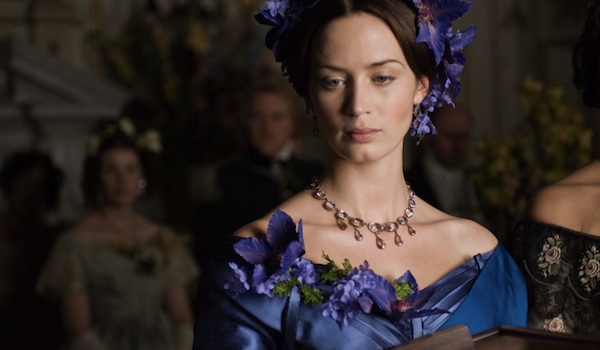The Young Victoria Review
European royalty dramas are a dime a dozen. The last decade has seen films about Queen Elizabeth I, Queen Elizabeth II, Marie Antoinette, among many others. The close of the decade brought another such film—Jean-Marc Vallée’s “The Young Victoria†about the early years of the reign of Britain’s longest serving monarch. The film isn’t without its problems (a poorly focused second half and a far too abrupt ending top the list), but the film’s intriguing look at the politics of the day, as well as the subtle romance between its principal characters, allows it to rise above most entries in the genre and be quite entertaining and surprisingly engaging.
When the film begins, Victoria (Emily Blunt) is 17. She is the heir apparent to the throne, and with the elderly King William (Jim Broadbent) on his way out, the plotters and schemers in Britain (and abroad) are scrambling to figure out how to use her to advance themselves. Her mother (Miranda Richardson) and her advisor, Sir John Conroy (Mark Strong), want Victoria to sign a regency agreement that will give her power over to her mother until she is 25. Her uncle, the King of the Belgians, wants to set her up with Prince Albert (Rupert Friend) in order to align the two nations. And there is a charming member of Parliament, Lord Melbourne (Paul Bettany) who sees the young girl as a means to achieve his political goals.
The film essentially outlines Victoria’s eventual ascent to the throne, her struggle to break away from those using her, and her romance with Albert. One of the problems is that the film isn’t able to mesh these different plots together. They are all interesting enough in their own right, but the film loses its focus so abruptly that it’s frustrating.
The acting is, for the most part, solid. Emily Blunt received a Golden Globe nod for her work here. She’s good, giving what might be her best lead performance. We can see all aspects of Victoria’s personality—her vulnerability, her desire to prove her mother wrong, her difficulty ceding power to anyone else, and her tenderness toward Albert. Unfortunately, the less than stellar performance by Rupert Friend means the romance isn’t fully formed. Blunt is convincing, but not Friend. His Albert is stiff and free of charm. The supporting work, thankfully, is much better. Miranda Richardson and Mark Strong are good, but their characters essentially disappear halfway through the film. Paul Bettany gives a complex performance of someone who might be villainous, but we never really know. The best of the bunch, however, is Jim Broadbent. He’s not around for long, but he absolutely steals every scene he is in.
Perhaps unsurprisingly, the biggest strengths of “The Young Victoria†are its technical features. The costumes are lavish, the art direction is spectacular, and the cinematography is beautiful. I usually get annoyed when period pieces like this rack up the Oscar nominations just because period pieces are supposed to look nice. However, this film is truly gorgeous. It deserved all the recognition it received in these categories.
I have to say I was surprised by this film. I rarely expect much out of period pieces of this sort because they all feel and look the same. This one, however, while not being totally unique, was interesting enough to be worthy of 100 minutes.
















